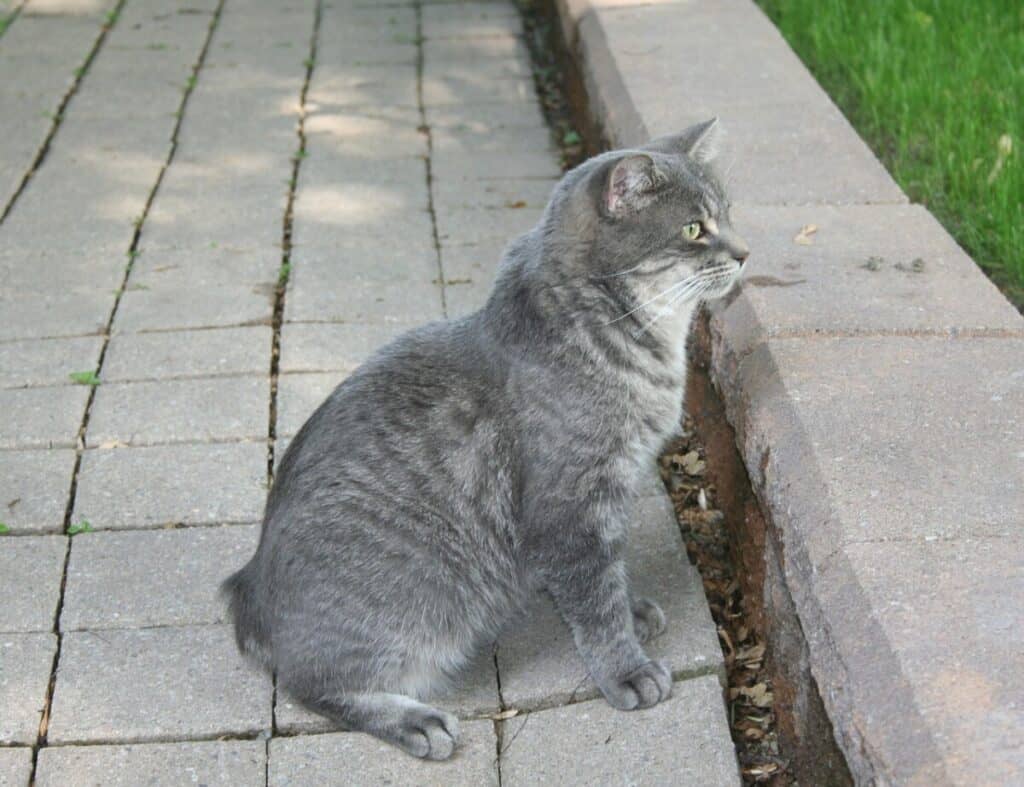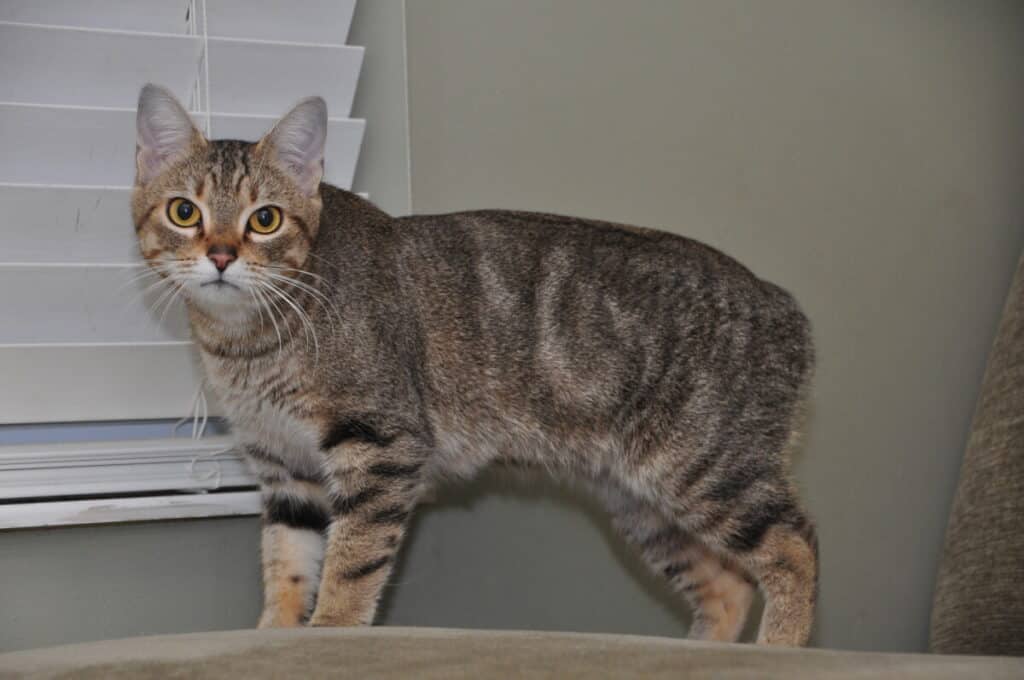
Manx cat, known as a cat without a tail, is earlier called a mank cat. It is said that Manx cat could be a breed of some domestic cat with a naturally occurred genetic mutation that shortens the tail. Not all Manx cats are without a tail. The Manx cat is a peaceful and sweet cat that never appears to get too steamed about anything. She is such a loving and caring partner and likes being with people.
She is so delicate and lively that she enjoys playing with toys and carries around them. Manx cats are additionally very smart and utilize its paws exceptionally to climb into cupboards, open doors, and cabinets. You can sometimes get amazed by its sweet communication with the owner, and she very fond of a human company showing all the love to the individuals.
Size of the Manx cat
An average height of a typical Manx cat is about 10.0″-12.0″ (25-30 cm)
Body length of manx cats is 14.0″”-16.0″” (36-41 cm)
An average Manx weighs between 8-12 lb (4-5 kg)
The life expectancy of Manx cats
The longevity of the Manx cat is about 9-13 years.
The average life span is about 14-16 years.
Colors and patterns of the Manx cat
Eye color: Amber, Copper, Green, Gold, Hazel, Orange, Yellow
Colors of Manx cat: White, Blue, Black, Red, Cream, Silver, Tortoiseshell, Blue cream, Brown.
Patterns of Manx cat: Solid color, Tortoiseshell, Bicolour, Tricolour/Calico, Tabby, Ticking, Smoke, Shaded
Personality and characteristics of Manx cats
Manx cats are short on the tail and medium-sized feline; however, she is stocky and intensely boned. The Manx has a fantastic backside and is a brilliant jumper, even without a natural balancing weight to help his parity. You can see him moving faster through the house and make sharp turns and quick stops. The Manx is regularly supposed to be like dogs both in reliability to their families and their affection for play.
Manx comes in both longhair and shorthair varieties, which both have double coats that ought to be thick and extravagant. Shorthairs have an external coat, which is reasonably hard and shiny, and the longhair has a plush coat, which is medium long. Even though their double coats cause these felines to feel delicate and rich to the touch.
The Manx is a round contoured cat with a rounded head, round eyes, a roundness at whisker pads, and a round poster. The ears structure a rocker shape when seen from behind. The Manx’s rear finish is higher than the front, which is clear when she is standing.

Types of the Manx cat
Rumpy – Manx cats with totally no tails are designated as “Rumpy.”
Stumpy – Felines with short tail stumps that are frequently bent, tied, or crimped are known as “Stumpy.”
Longy – Manx cats, which are almost with ordinary length tails, are called “Longy.”
Only “rumpies,” or felines called “rumpy risers” that have a slight ascent of bone where their tails would begin.
Food and nutrition
Manx cats, like other cats, require a standard and good eating routine stuffed with all kinds of protein, nutrients, minerals, fats, and water. Their diets should incorporate fish oils and omega 3 unsaturated fats to keep their thick coat solid, taurine for their vision and heart health, and fiber for digestion and weight control.
Manx cat health issues
In the same way as other breed varieties, Manx cats have the danger of getting exposed to unique medical issues. The genetic mutation in the Manx cats that result in the absence of a tail influences the advancement of its spine and spinal string. Thus, numerous Manx kitties experience the ill effects of a variety of agonizing indications, which are alluded to as “Manx Syndrome,” a birth deformity that keeps the vertebrae from developing around the spinal rope. Different sufferings incorporate incontinence or stoppage, an odd position, a “jumping” walk, an absence of sensation or loss of motion in the rear legs, and twisted pelvic or sacral bones. These birth imperfections can, in some cases, be deadly, may cause a lack of inside or bladder control, and cats suffer from weak rump or one feeble rear leg.
